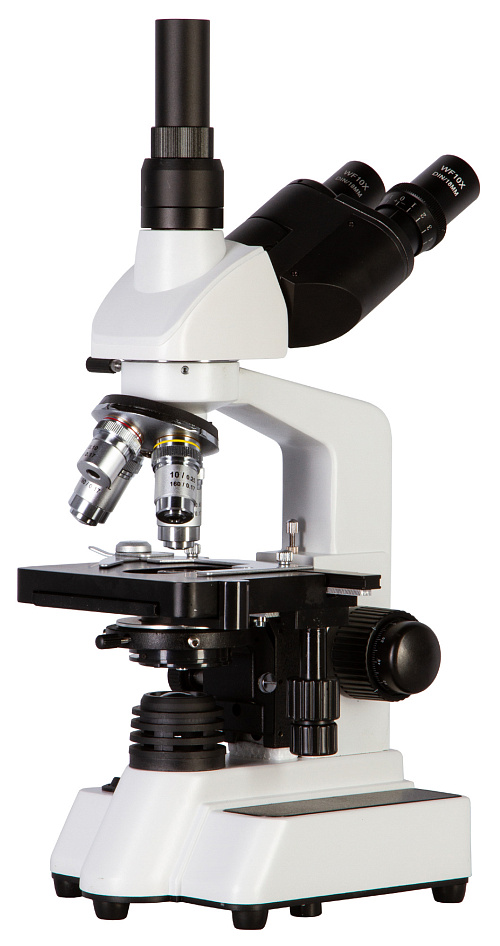Bresser Researcher Trino 40–1000x Microscope
Trinocular head. Magnification: 40–1000x
| Product ID | 62567 |
| Brand | Bresser GmbH, Germany |
| Warranty | 2 |
| EAN | 4007922150642 |
| Package size (LxWxH) | 30x22x46 |
| Shipping Weight | 4.8 |
The Researcher Trino offers observing fun for an unbeatable price. Based on a solid metal body and equipped with DIN eyepieces and objectives, this transmission-type microscope fulfils even professional demands with its optical and mechanical quality. Many details, for example the cross table for optimal object positioning or the focuser with coarse and fine drive for dead-sharp images. Instead of a binocular head, the Trino Researcher has a trinocular head. With this equipment, the observer can make binocular obseravtions and – at the same time! – take photographs or use a PC eyepiece.
Features:
- Magnifications: 1000x, 400x, 100x, 40x
- Application range: Biology, Education, Teaching, Imaging Solutions, Botany
- Transmitted light microscope for high demands
- Dimmable LED illumination
- Additional lens barrel for a connection with a camera
- Abbe-condenser with iris diaphragm
- Adjustable eye relief
The kit includes:
- Biological trinocular microscope
- 4 DIN-objectives
- 2 eyepieces
- Mechanical stage
- Condensor
- Manual
| Product ID | 62567 |
| Brand | Bresser GmbH, Germany |
| Warranty | 2 |
| EAN | 4007922150642 |
| Package size (LxWxH) | 30x22x46 |
| Shipping Weight | 4.8 |
| Type | biological, light/optical |
| Head | trinocular |
| Nozzle | 360 ° rotatable |
| Head inclination angle | 30 ° |
| Magnification, x | 40 — 1000 |
| Eyepiece tube diameter, mm | 23.2 |
| Eyepieces | 10x |
| Objectives | 4x, 10x, 40x, 100x (oil immersion) |
| Revolving nosepiece | for 4 objectives |
| Interpupillary distance, mm | 53 — 75 |
| Stage features | mechanical |
| Eyepiece diopter adjustment, diopters | ±5 |
| Condenser | Abbe |
| Diaphragm | iris |
| Focus | coaxial; coarse and fine |
| Body | metal |
| Illumination | LED |
| Brightness adjustment | ✓ |
| Power supply | 220–240V |
| Adapter | AC adapter |
| User level | experienced users, professionals |
| Optical scheme | achromat |
| Application | laboratory/medical |
| Illumination location | lower |
| Research method | bright field |
We have gathered answers to the most frequently asked questions to help you sort things out
Find out why studying eyes under a microscope is entertaining; how insects’ and arachnids’ eyes differ and what the best way is to observe such an interesting specimen
Read this review to learn how to observe human hair, what different hair looks like under a microscope and what magnification is required for observations
Learn what a numerical aperture is and how to choose a suitable objective lens for your microscope here
Learn what a spider looks like under microscope, when the best time is to take photos of it, how to study it properly at magnification and more interesting facts about observing insects and arachnids
This review for beginner explorers of the micro world introduces you to the optical, illuminating and mechanical parts of a microscope and their functions
Short article about Paramecium caudatum - a microorganism that is interesting to observe through any microscope





















